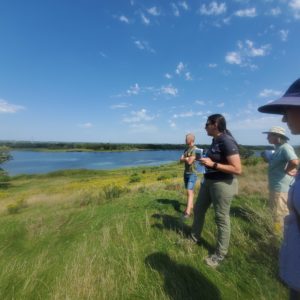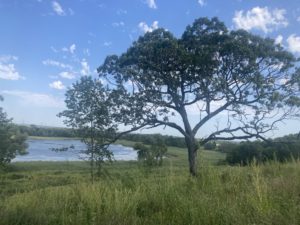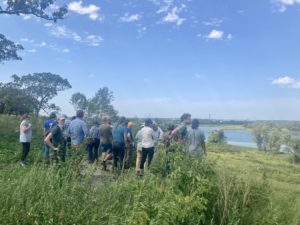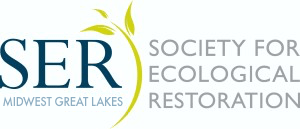
Restoration through the eyes of Shakopee Mdewakanton Sioux
Our visit to the Shakopee Mdewakanton Sioux Community on September 2, 2022, was a wonderful day!
The day began in the lobby of the Hoċokata Ti’ cultural center where we introduced ourselves (all 25 of us!) before we had a guided tour of the public exhibit. Our educational guide walked us through the exhibit highlighting objects and scenes representing traditional ways of living. We also learned through the lens of the Sioux how their traditional ways drastically changed with the Trade and Treaty Eras of interactions and settlement by Europeans on Sioux homelands. At the end of the exhibit we learned about the current Shakopee enterprises, including the cultural center’s offerings.
Afterwards, in the cultural center auditorium, we heard about the Dakota Sioux worldview, and that the Dakota worldview and language are tied together and to the land. There is no division between culture and nature or between humans and the environment. To the Dakota, there is a word for “living beings of the earth,” but there is not a hierarchy of beings or words for “animals” or “plants.” And words have cultural meaning. For example, Hoksicekpa is the Dakota word for Pasqueflower. Broken into separate words – Hoksi (infant) and cekpa (belly button) – Pasqueflower looks like a belly button when first emerging from the ground in the spring.
We also learned about the Mdewakanton calendar that is based on 13 moons, rather than months. Our group visited during Psinhnaketu Wi, or the Wild Rice Storing Moon. Broken into separate words – Psin (wild rice), ehnaka (to store), tu (time), and Wi (moon). Other summer moons include Strawberry Ripening Moon (most of June), Chokecherry Ripening Moon (most of July), and When Things Ripen Moon (most of August).
Over box lunches at picnic tables outside the cultural center, we visited with one another – learning more about others’ restoration projects and knowledge. Connections were made, and emails exchanged.
Back in the auditorium, our host, Ferin Davis Anderson, gave us an overview of the restoration sites and the history and techniques used to begin the healing of the land. On our tour, we walked through the 38-acre reconstructed dry, mesic, and wet prairies adjacent to the cultural center and through a 47-acre oak savanna restoration on a bluff overlooking Dean Lake.
-Mary Damm (Vice President SER MWGL)

Hoċokata Ti’ cultural center with prairie reconstruction in the foreground. Photo by Chris Lenhart.

Ferin Davis Anderson (center) explaining oak savanna restoration techniques. Photo by Lucy Gregersen.

Oak savanna restoration over Dean Lake. Photo by Chris Lenhart.

Our group viewing the oak savanna restoration. Photo by Chris Lenhart.

